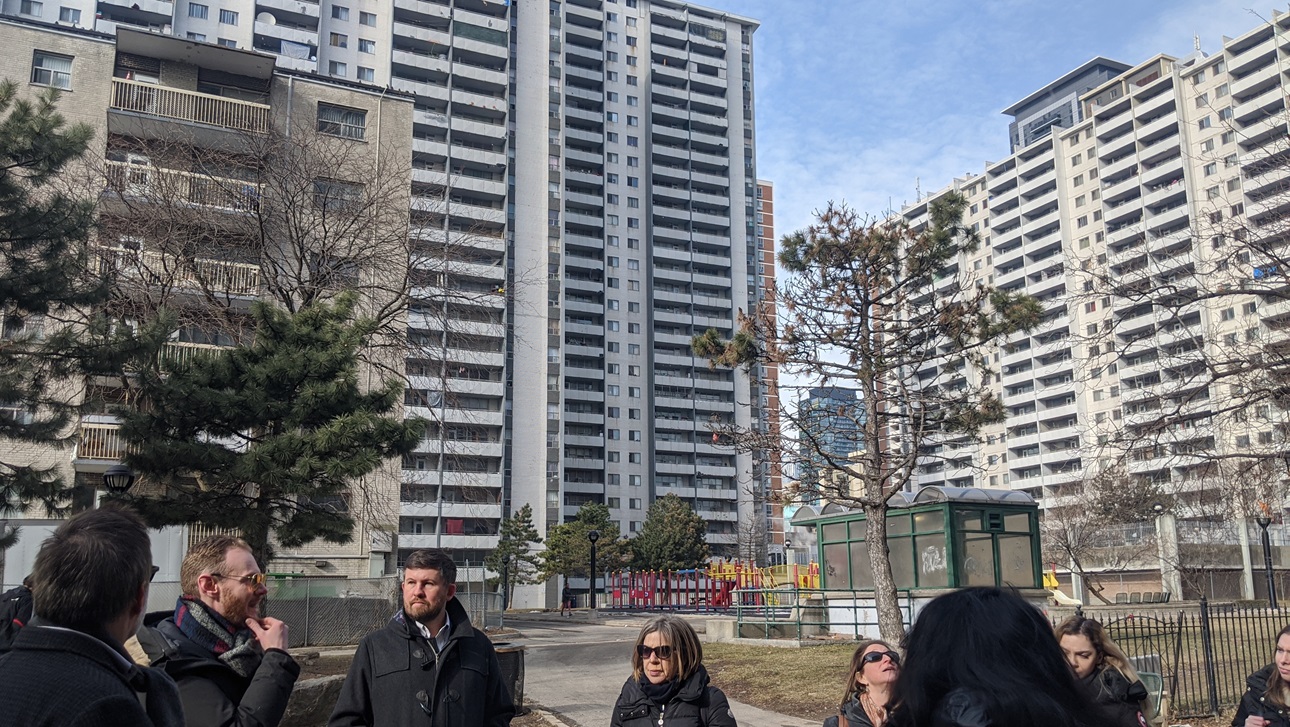Toronto, ON

Yet, these buildings are now over 35 years old and require substantial investment to continue to be safe, comfortable, and healthy places to live for another 50 years – including updated heating systems and windows, back-up power, and possibly central air conditioning. Balancing resilience, affordability, and investment is a public policy objective for all levels of government. Toronto’s Resilience Strategy identified these buildings as an urgent priority for providing the city’s overall resilience, for ensuring affordability is maintained, and for housing lower income populations are adequately. There is enormous opportunity to invest in these buildings to achieve multiple goals, including improving tenant livability, decreasing green-house gas emissions, improving building and community resilience, and increasing workforce development in low-income areas.
While Toronto’s public and non-profit owned towers have made progress on deep retrofits, the goals of continued affordability and expanded investments in retrofits for housing quality and climate resilience do not align in private towers. Innovative solutions will be required to maintain affordable rents. If deep retrofits are possible with a strong return on investment (ROI), these buildings could be one of the last un-tapped real estate opportunities in a tough market.
The focus of the panel was to determine how the public and private sector can work together to unlock the necessary investments and drive sustainable retrofits of Toronto’s towers while maintaining affordability.
Report Summary: Aging, purpose-built rental apartment buildings are the backbone of the rental stock in Canada and are home to hundreds of thousands of households with modest and low incomes. Over 500,000 Toronto residents live in approximately 1,000 towers that are 8 or more floors and built before 1985. The majority (85%) of these buildings are privately owned. One in three low-income families live in these apartment towers. With rental rates lower than those of newer rental building, the housing opportunities in Toronto’s Towers provides the “de-facto” affordable housing option for Torontonians.
Yet, these buildings are now over 35 years old and require substantial investment to continue to be safe, comfortable, and healthy places to live for another 50 years – including updated heating systems and windows, back-up power, and possibly central air conditioning. Balancing resilience, affordability, and investment is a public policy objective for all levels of government. Toronto’s Resilience Strategy identified these buildings as an urgent priority for providing the city’s overall resilience, for ensuring affordability is maintained, and for housing lower income populations are adequately. There is enormous opportunity to invest in these buildings to achieve multiple goals, including improving tenant livability, decreasing green-house gas emissions, improving building and community resilience, and increasing workforce development in low-income areas.
While Toronto’s public and non-profit owned towers have made progress on deep retrofits, the goals of continued affordability and expanded investments in retrofits for housing quality and climate resilience do not align in private towers. Innovative solutions will be required to maintain affordable rents. If deep retrofits are possible with a strong return on investment (ROI), these buildings could be one of the last un-tapped real estate opportunities in a tough market.
The focus of the panel was to determine how the public and private sector can work together to unlock the necessary investments and drive sustainable retrofits of Toronto’s towers while maintaining affordability.


